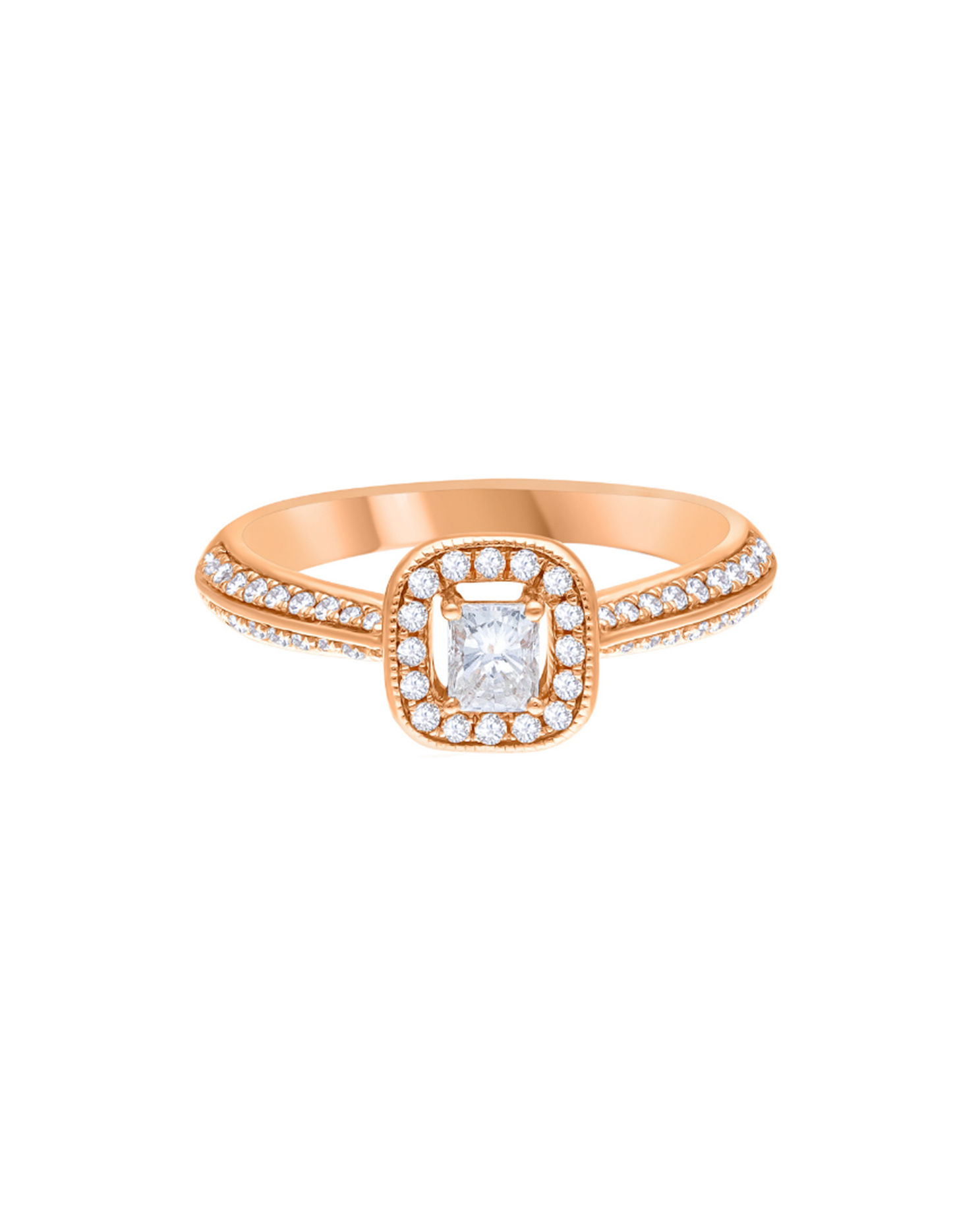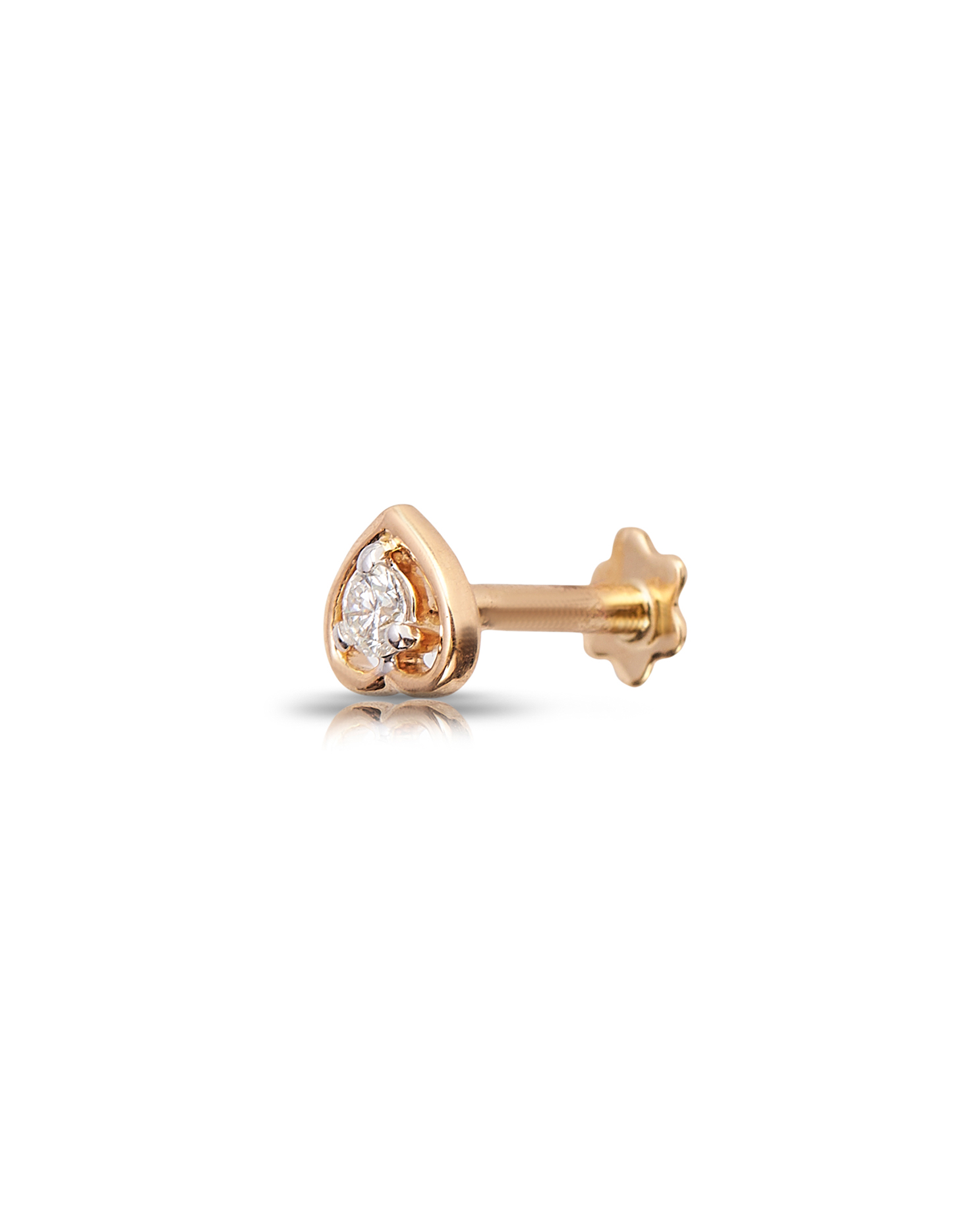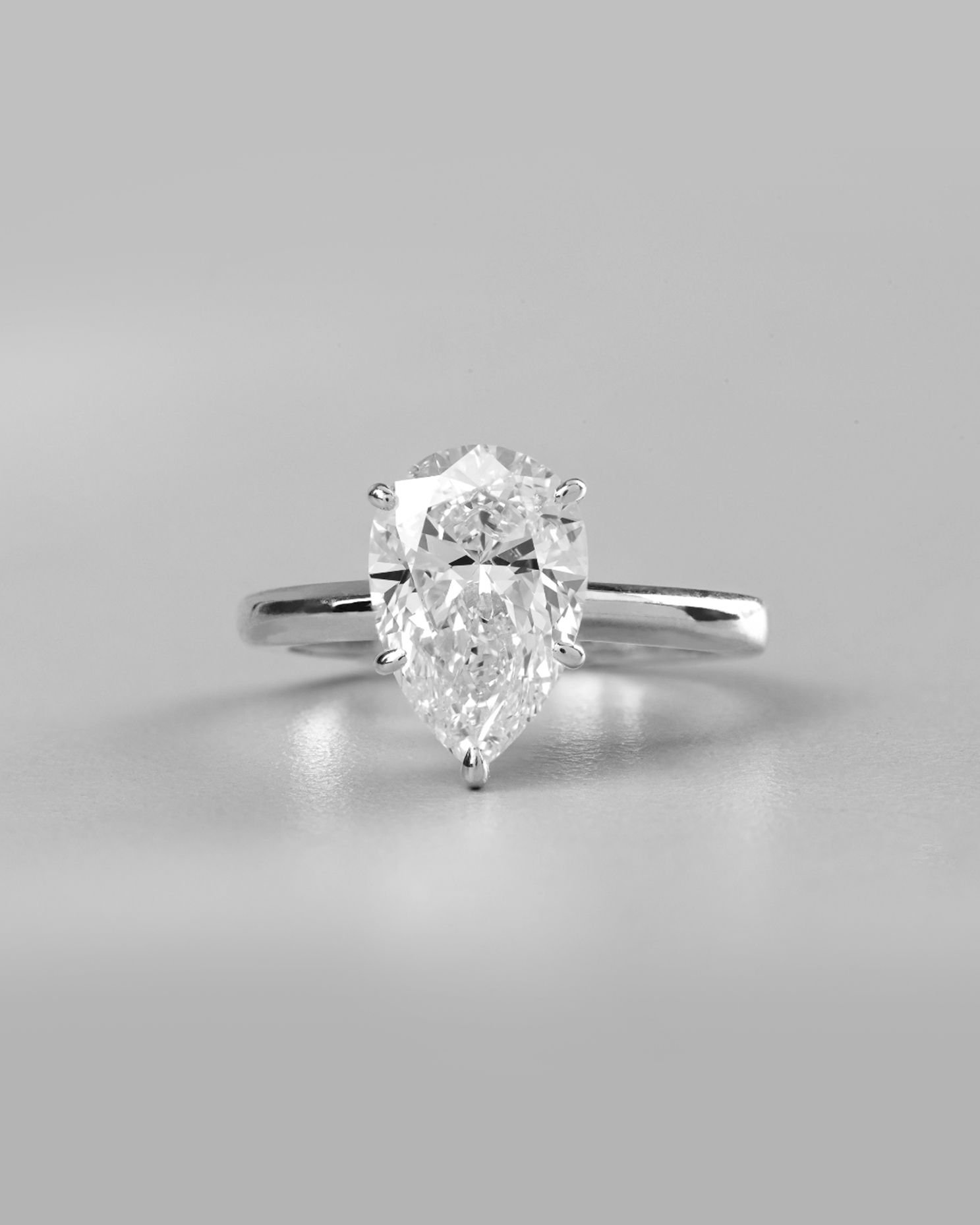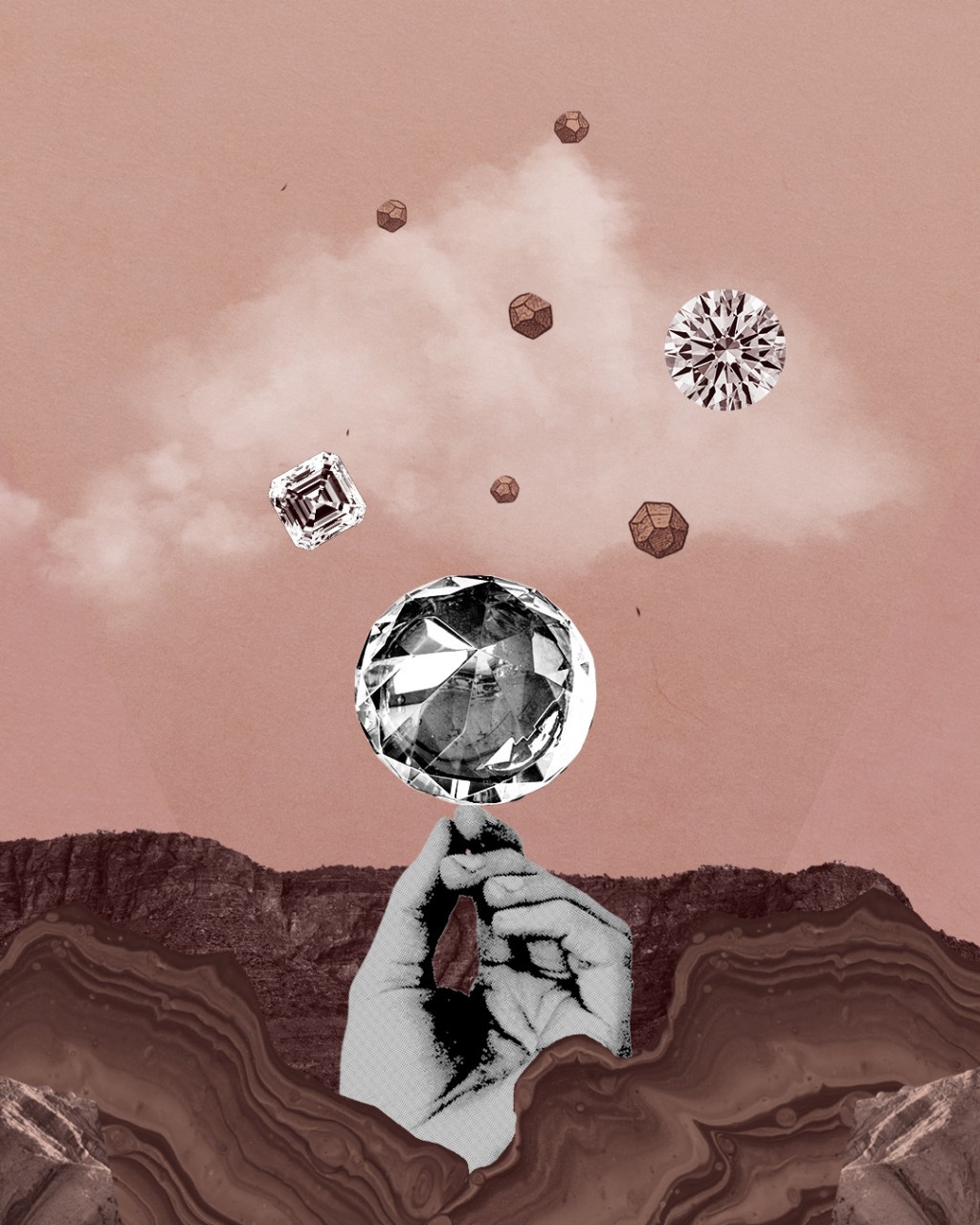Your Guide to the Top 10 Most Googled Solitaire Questions!
A deep dive into the world of Solitaires, as answered by the experts in the natural diamond world.

Our commitment to demystifying the world of solitaires continues with this series, where we address the internet’s most-asked questions on facts about real diamonds with clarity and credibility. In our first edition, we uncovered the essentials through trusted insights from the industry. Building on that momentum, we now explore the finer nuances of solitaires while equipping you with knowledge that makes every choice more informed and meaningful.
Read away and find out!
1. What is a Solitaire diamond?
Neil Sonawala, Managing Director, Zen Diamond India: A solitaire diamond is a single real diamond set in a piece of jewellery. This definition applies to a necklace, pendant, ring, earrings, or any other type of jewellery. However, once other stones are included, it no longer qualifies as a solitaire. I’ve seen solitaire diamonds in rare and unusual colours—red, blue, orange, and green, all over 1 carat in size. One of the most unique pieces I’ve come across was a 50-carat pear-shaped diamond, which was extremely rare.
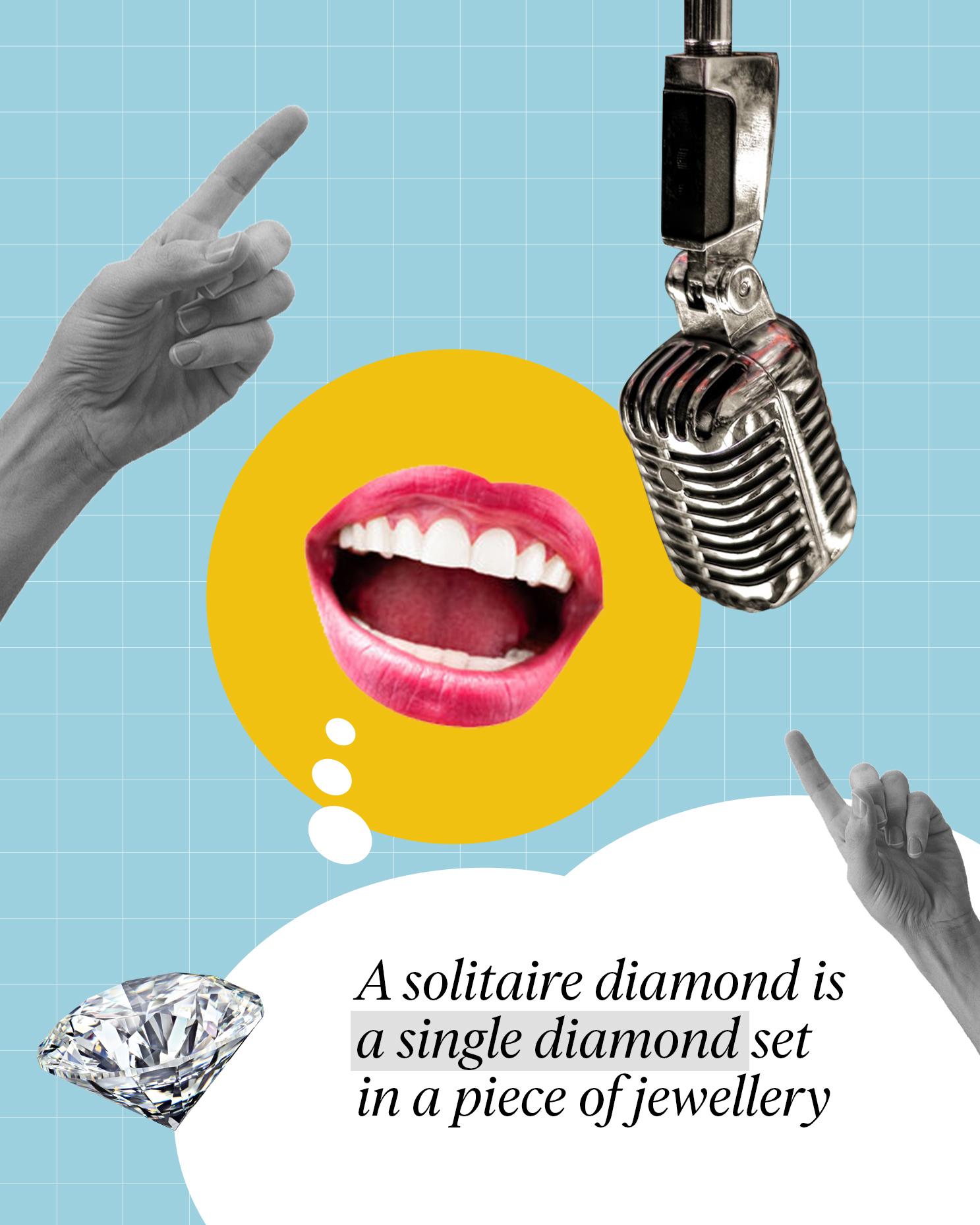
Ashish Pethe, Partner, Waman Hari Pethe Jewellers: A single diamond that’s 30 cent up is considered a Solitaire, but people usually expect 50 cents and up to be called a Solitaire. It’s essentially the single-stone weight that qualifies as a Solitaire — like the exquisite 7-carat Solitaire I sourced for a customer, which was extremely satisfying.
2. How is a Solitaire different from a diamond?
Jignesh Mehta, Founder & Managing Director, Divine Solitaires: A diamond is a gemstone, but a Solitaire refers to the setting—a single, often larger, authentic diamond set prominently, drawing attention to its brilliance. This contrasts with diamonds in clusters or multi-stone designs, where the focus is shared. The true difference between solitaire jewellery and other diamond pieces also lies in its purpose more than its design. Solitaire jewellery symbolises life’s milestones—promise, relationships, and achievements—carried through timeless, meaningful moments.
A minimalist solitaire holds value due to its simplicity and elegance. It lets the real diamond shine in both beauty and significance, embodying understated luxury. If a chunky, multi-stone design has the visual appeal, a single larger diamond carries everlasting beauty.
Varghese Alukkas, MD, Jos Alukkas: Real natural diamonds symbolise collective brilliance and shared joy, often associated with celebration and abundance, making them perfect for marking milestones or special occasions. Solitaires, on the other hand, evoke a sense of longevity and individuality, representing deep, focused love and commitment. While real diamonds highlight versatility and beauty, solitaires stand as singular, iconic statements of purity and emotional depth, often tied to life’s most meaningful moments. At the end of it all, a Solitaire is a real diamond, too.
3. What are the types of Solitaire?
Neil Sonawala: A solitaire is defined by a single diamond, regardless of its cut or shape. The round brilliant cut is the most popular, making it the most common type of solitaire. However, fancy shapes offer a distinctive way to express individuality, particularly in an engagement ring, where trends evolve over time. Shapes such as princess cut, oval, pear-shaped, cushion, and heart add personal flair and cater to the wearer’s unique aesthetic preferences. Ultimately, the beauty of a solitaire lies in the taste and style of the person wearing it, regardless of the cut.
Personally, I’m drawn to heart, pear, and the classic round diamond cuts. These shapes have a timeless appeal and exude both elegance and versatility, making them ideal for any occasion or style. The round cut, in particular, is a classic that complements everything beautifully.

Varghese Alukkas: Solitaires can be segmented based on the 8 shapes they come in.
Round: The classic and most popular shape, known for its brilliance and timeless appeal.
Princess: A square-shaped diamond with sharp corners, offering a modern yet elegant look.
Oval: A sophisticated shape that elongates the finger and maximizes brilliance.
Emerald: A rectangular step-cut gemstone that highlights clarity and a vintage charm.
Cushion: A soft, square shape with rounded edges, offering a mix of vintage and contemporary styles.
Marquise: An elongated shape with pointed ends, ideal for creating a bold, dramatic look.
Pear: A teardrop-shaped stone combining round and marquise cuts for a unique appearance.
Heart: A romantic shape often symbolising love and affection.
4. What is so special about Solitaire?
Vinod Bamalwa, Director, Nemichand Bamalwa & Sons: A solitaire represents timeless beauty, carrying deep meaning and emotional value. For instance, you can celebrate your love with diamonds. When I think of a solitaire, the first emotion that comes to mind is awe. It’s a symbol of purity, unity, and eternal commitment. There’s something magical about the way a single diamond speaks volumes—it doesn’t need embellishments. The simplicity and timeless tradition of solitaires continue to captivate me to this day.
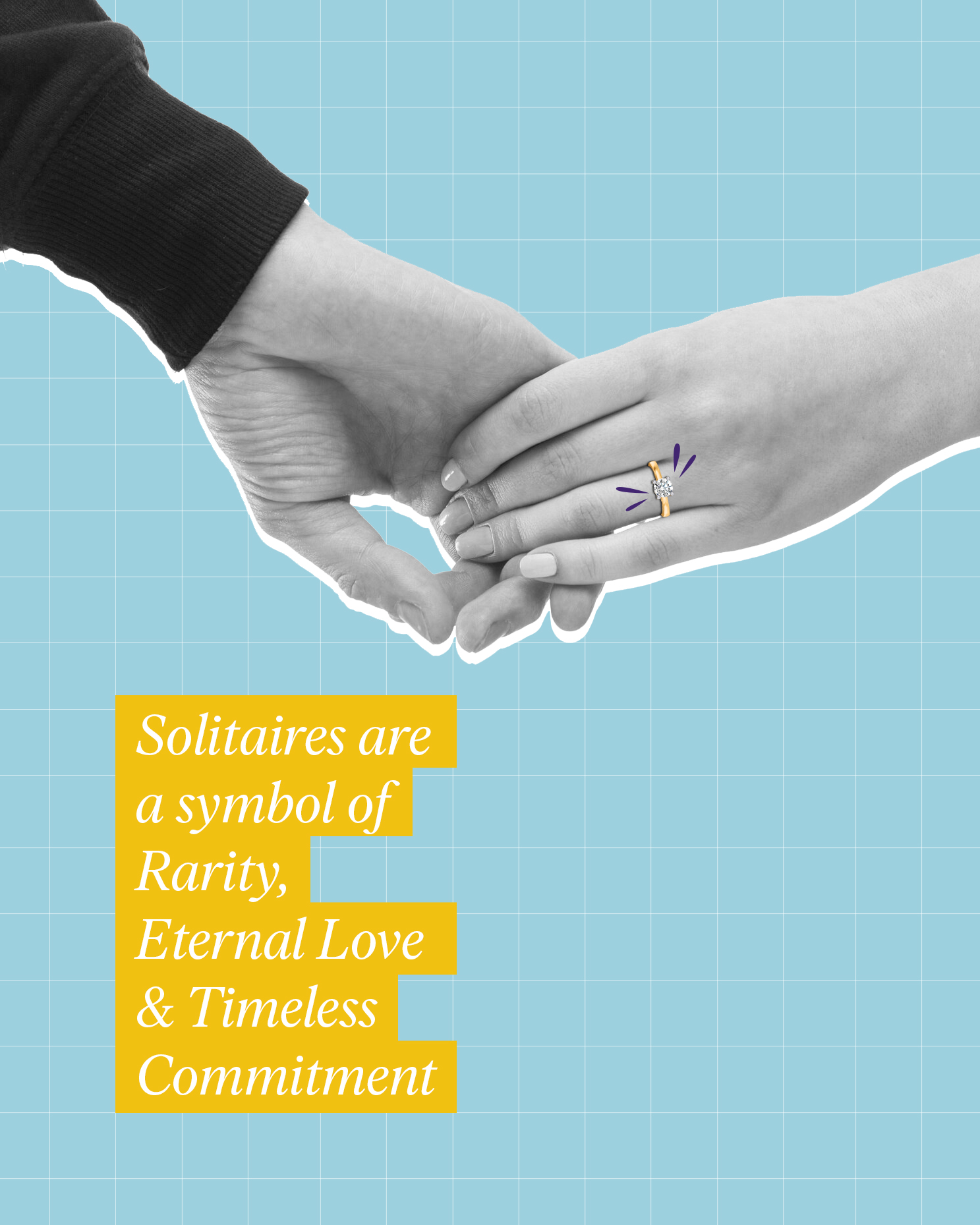
I’ve seen solitaires used in non-traditional ways. For instance, I helped a client create a solitaire pendant for her newborn daughter—not about romance, but to mark the joyous beginning of a new life. But the first solitaire I sold was for a client who wanted a special gift for her husband. She ended up custom-designing a set of emerald-cut diamond buttons, and the sparkle in her eyes when she saw them was unforgettable.
5. Why are Solitaires so expensive?
Ashish Pethe, Partner, Waman Hari Pethe Jewellers: Natural solitaire diamonds are rare because mining requires moving more than one tonne of earth to extract just one carat of diamond. Furthermore, the extracted rare diamond must be of D or E colour to be considered top quality. While dealing in fancy-coloured diamonds, I have come across vivid pink solitaires called Sakuras in Japan, which were extremely beautiful. Additionally, the formation of the diamond must occur under specific conditions to avoid impurities, ensuring higher clarity grades are achievable.

Jignesh Mehta: As the size of a diamond increases, its rarity also rises, which in turn drives up the price. Solitaires are among the most exclusive diamonds and carry a premium price tag. This rarity stems from the difficulty of sourcing an ideal rough stone suitable for solitaire cuts. Crafting a unique diamond like a solitaire requires great precision and attention to detail, as even a minor mistake can impact its quality and brilliance. These elements make solitaires unique, exclusive, and valuable.
Key factors influencing the price of solitaires:
Rarity: Large, high-quality diamonds are far rarer than smaller stones.
Demand: Solitaires represent love, engagements, and significant milestones, fuelling demand for these precious gems.
Emotional value: The history, tradition, and legacy associated with solitaires add worth beyond their physical characteristics.
There’s a particular satisfaction in sourcing a solitaire that stands out for more than just its size—it may have an exceptional colour grade, outstanding clarity, or even a rare natural fancy colour. I once sourced a vivid blue solitaire for a client; its striking intensity was so rare that it became the talk of the town. Diamonds like these justify their high prices through sheer rarity and uniqueness.
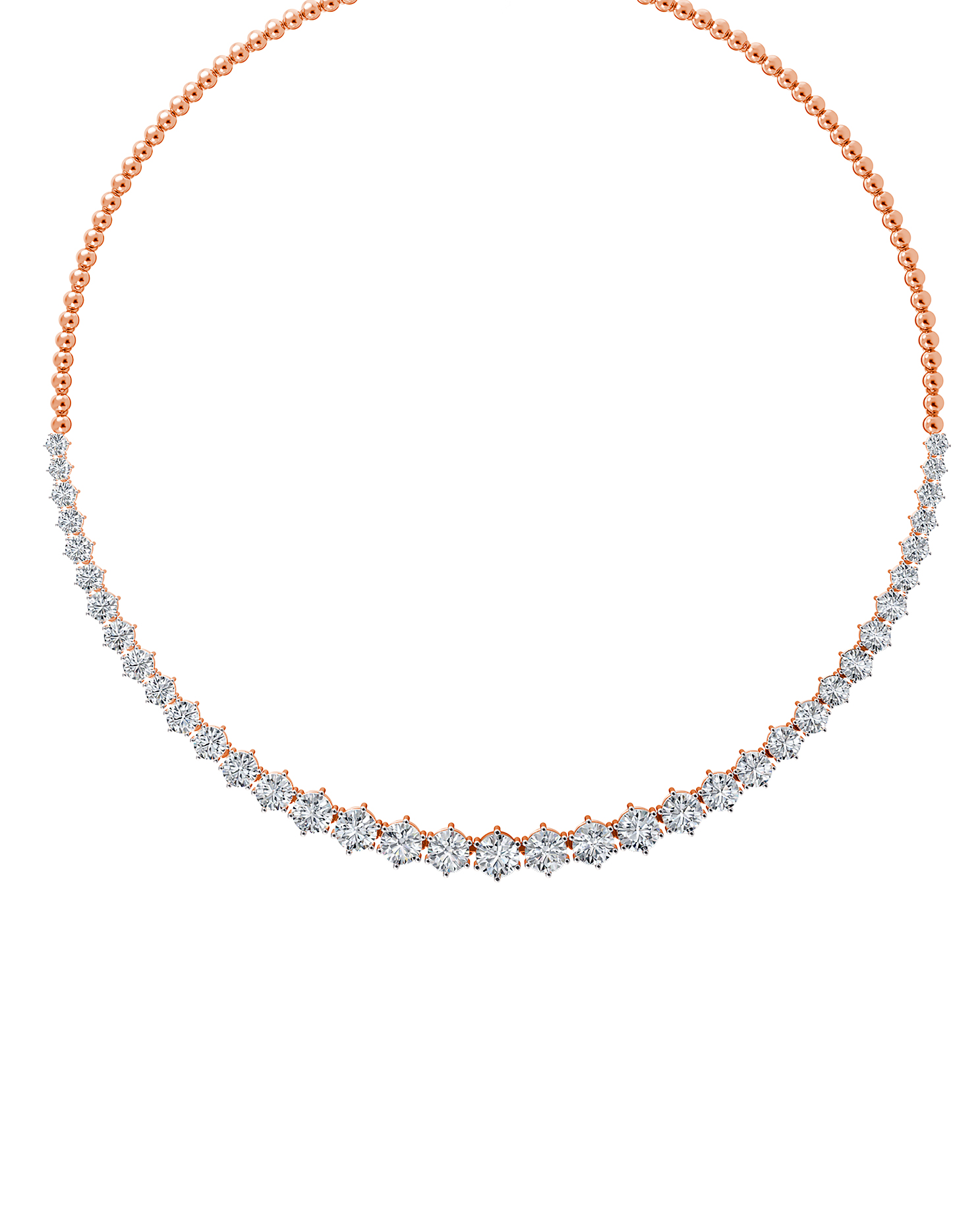
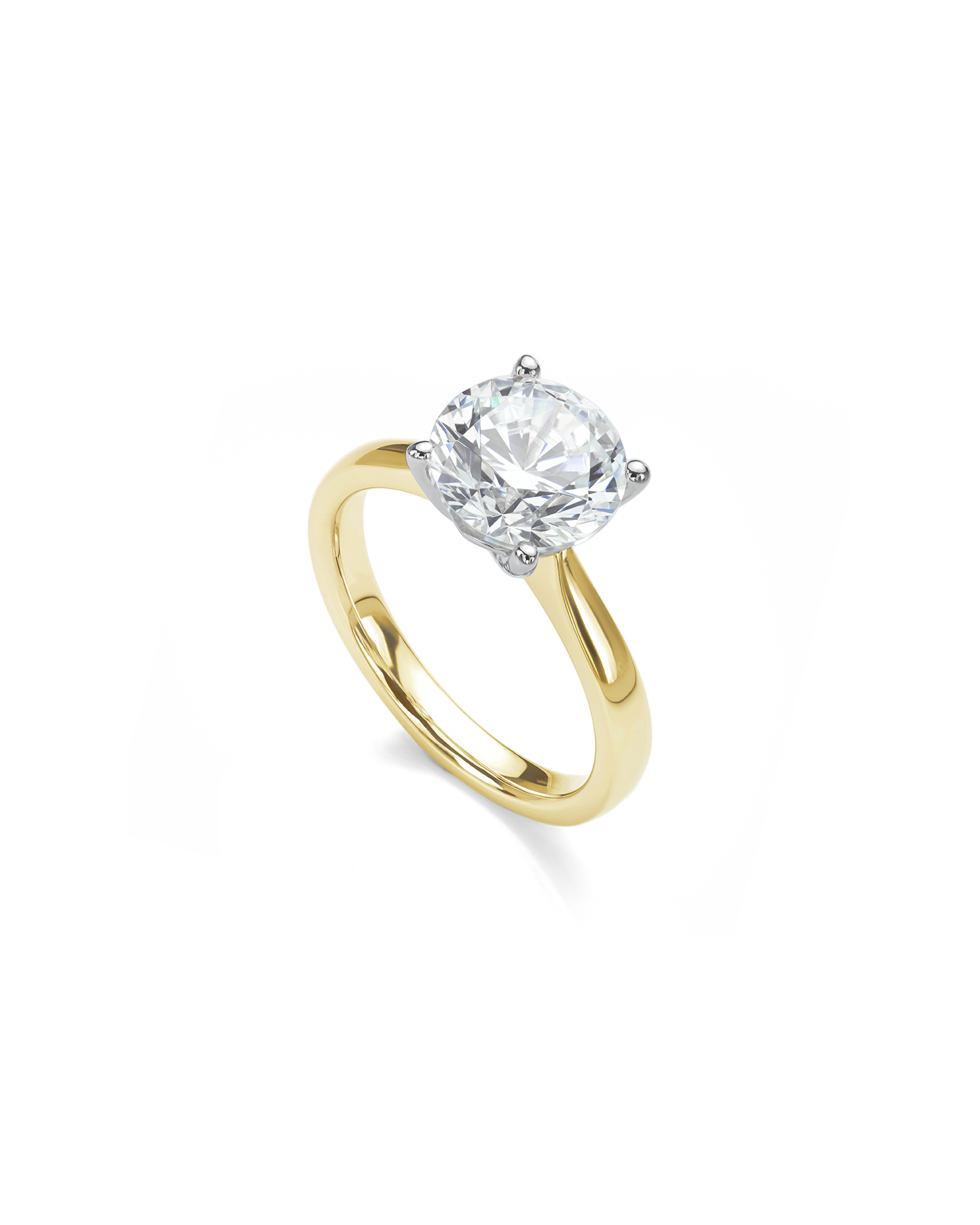
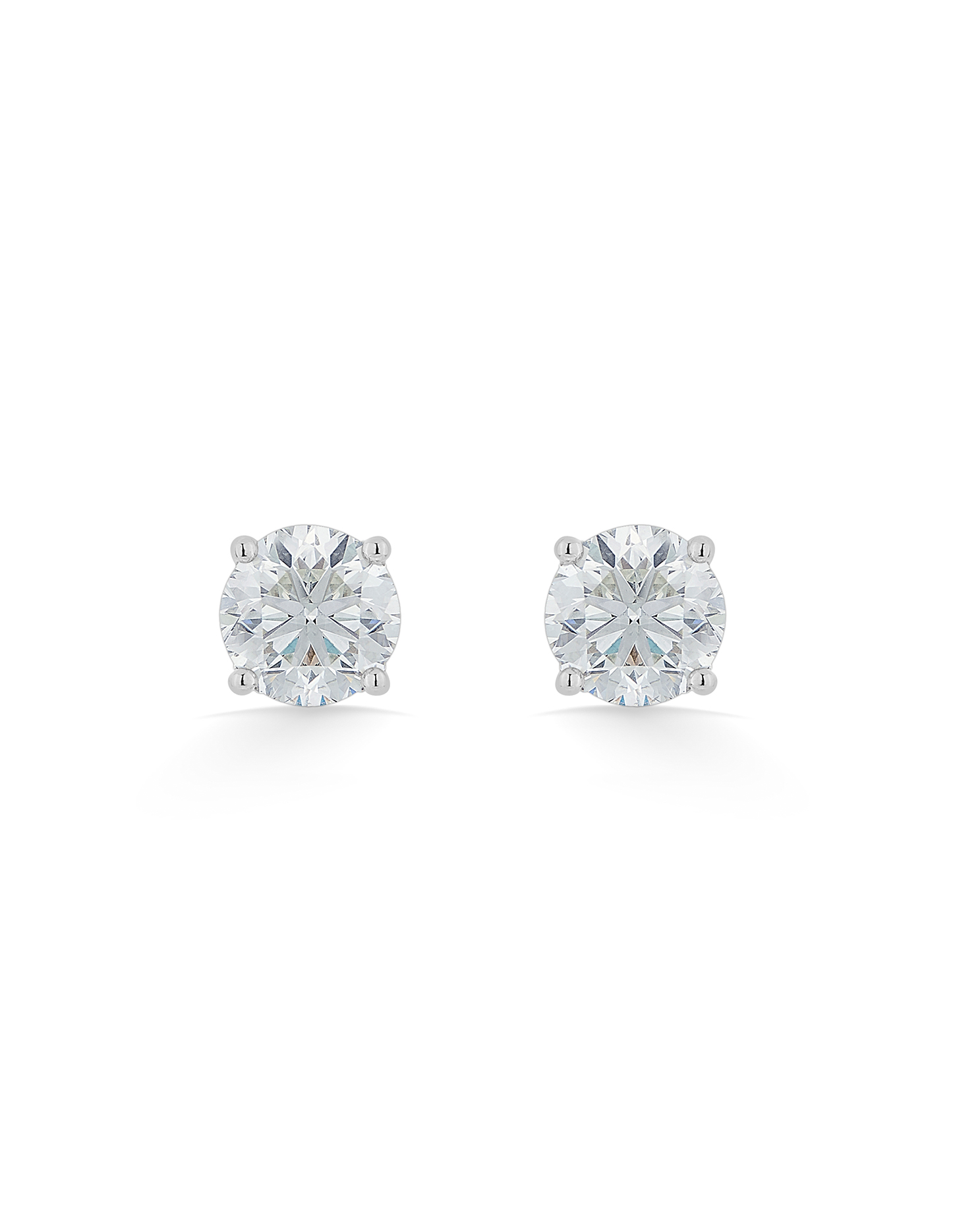
6. What sets natural Solitaires apart from lab-grown diamonds?
Ashish Pethe: In appearance, they are 99.9% similar. Real natural diamonds are created after thousands of years of nature at work, whereas lab-grown or synthetic diamonds are man at work for just a couple of days. So, what has survived thousands of years of nature’s energy and conditions sets natural diamonds apart. Each gem has a story to tell and bears the signature of the time passed to create it. Secondly, with overproduction, lab-grown diamonds’ prices, and thus their value, have gone down.
Verghese Alukkas: When choosing between natural and lab-grown diamonds, perception is often more influential than appearance. Synthetic diamonds, commonly seen as fashion jewellery, lack the enduring value and emotional significance that natural diamonds carry. A natural diamond is a symbol of a lasting commitment, representing billions of years in the making under intense geological conditions. Lab-grown diamonds, while chemically identical, are manufactured in labs through Chemical Vapour Deposition (CVD) processes. As production of lab-grown diamonds increases, their prices continue to fall.
There’s also a misconception that natural diamonds come with a high environmental cost or are less ethical. While stories of poor mining conditions in some regions might suggest lab-grown diamonds are more ethical diamonds, this isn’t always the case. Lab-grown diamonds require significant energy for production, which may not always be eco-friendly. On the other hand, responsible diamonds contribute to communities through ethical diamond practices and certifications like the Kimberley Process, ensuring that conflict-free diamonds reach the market.
7. What are the different things to consider or mistakes to avoid when buying a Solitaire?
Ashraf Motiwala, Managing Director, A S Motiwala Fine Jewellery: When purchasing a solitaire, consider the Diamond 4 Cs: Cut, Clarity, Colour, and Carat Weight, which define a diamond’s quality. Ensure the diamond is certified by reputable organisations like GIA. A well-proportioned diamond with an excellent or very good cut will outshine a bigger, poorly cut stone. The setting should enhance, not overpower, the solitaire. Additionally, consider ethical sourcing to ensure the diamond is conflict-free.
To determine your budget, consider the significance of the occasion. You should also decide whether you prioritise quality that retains value or a more affordable piece.
The cut of a diamond is the most important factor when choosing a solitaire. It affects the diamond’s brilliance more than any other factor. A well-cut diamond reflects light beautifully, ensuring it looks bright and captivating from every angle.
Be aware of hidden costs when purchasing a solitaire. These include setting charges, as custom settings can add significant costs. Some sellers may also charge separately for certification fees.
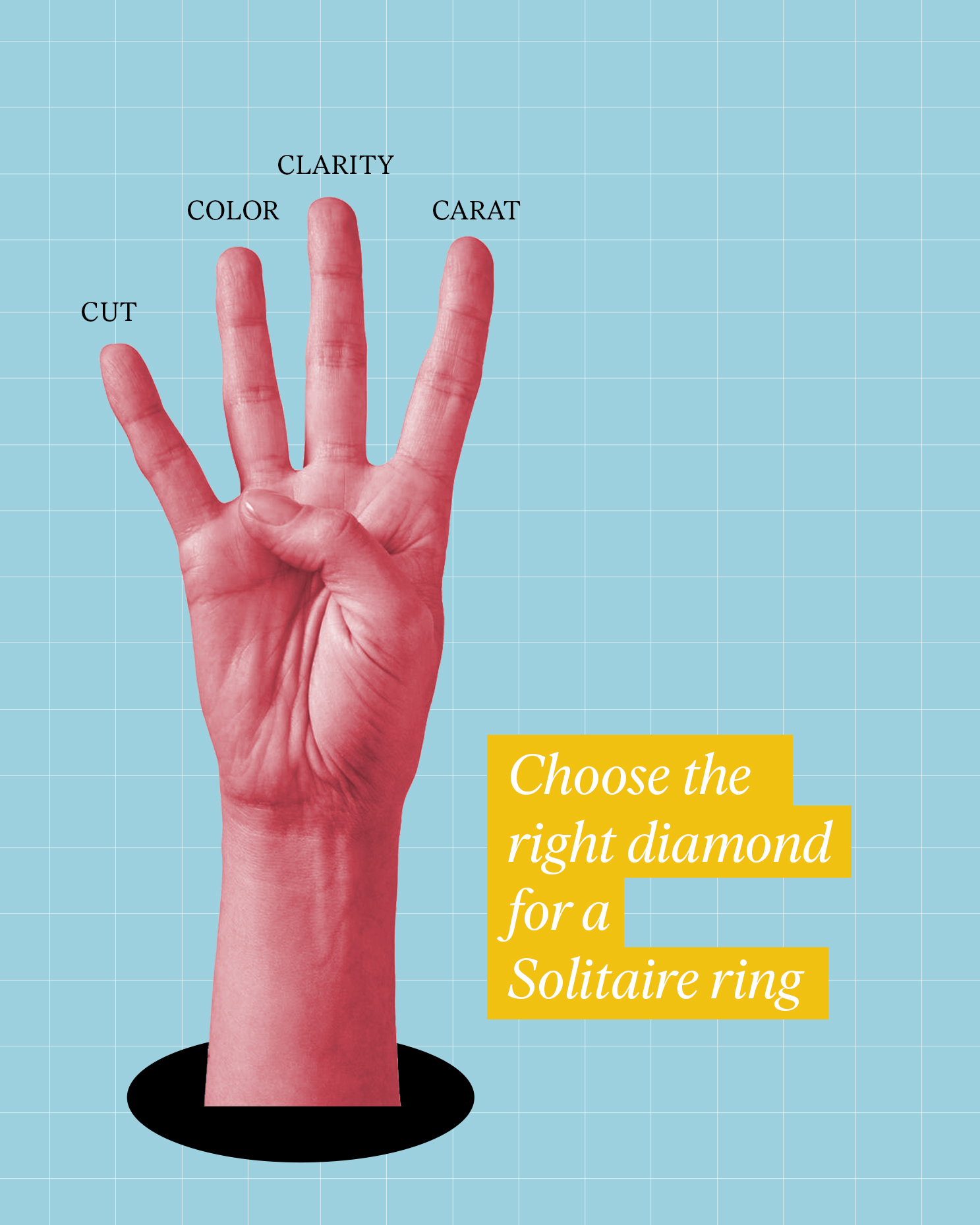
De Beers: Key Factors to Consider When Investing in a Solitaire Diamond:
Choose a Reputable Jeweler
Select a trusted retailer who can guide you through the diamond-buying process. A credible jeweler will clearly explain the 4Cs of diamond (Cut, Color, Clarity, and Carat Weight), using examples to help you understand your options as well as provide you with the right certification.
Explore Within Your Budget
Request to see diamonds within your budget range. Understanding what’s available helps you find the best value without compromising on quality.
Consider Buying an Unset Diamond
Some buyers prefer to purchase an unset diamond and design the setting later, often incorporating their partner’s input. This approach offers flexibility and customization.
Know Your Preferred Cut and Shape
Not all diamond cut shapes are priced equally. Knowing your preference helps the jeweller recommend styles that maximize beauty while staying within your budget.
Balance the 4Cs
A well-balanced combination of the 4Cs of diamond ensures you get a stunning diamond with great value. Prioritize factors that matter most to you for a purchase you’ll cherish.
Neil Sonawala: When buying a solitaire diamond, there are key factors to consider. First, ensure you truly love the piece. With solitaires, the “less is more” adage holds true, the focus is the unique diamond, so the setting should enhance, not overshadow it. Minimal, unobtrusive prongs, like the iconic six-prong Tiffany setting, create the illusion of the diamond floating above the band.
Consider your lifestyle too: for an active or adventurous life, opt for a secure setting with protective prongs. Lastly, explore insurance and repair options. A great buying experience can foster a lasting relationship with a jeweller who knows your diamond’s history.
8. How to choose the right diamond for a Solitaire ring?
Ashraf Motiwala: Firstly, prioritise cut quality — an excellent or very good cut is essential. Consider the Solitaire’s overall proportion; a high carat weight doesn’t necessarily mean it looks large if proportions are poor. Choose a setting that complements the stone while ensuring security. Lastly, consider ethical sourcing, as a naturally sourced diamond reflects the values behind your investment.
I recall a memorable experience with a bride-to-be who had extensively researched diamonds. She knew exactly what she wanted, down to fluorescence and table size. Together, we found her perfect solitaire, aligning with her research and dreams. Her dedication reminded me that every piece we sell holds deep personal significance for its buyer.
Neil Sonawala: Don’t let technicalities overwhelm you—do some basic research and ask all the questions you need. Plenty of straightforward online resources, as well as a diamond buying guide — both written and video — are available.
One of my most rewarding experiences was importing a specific solitaire from another country to match a client’s vision. Going the extra mile is what makes each diamond purchase truly special.
Beyond the 4Cs, ensure you get a grading report, which may reveal additional characteristics like fluorescence—a glow under certain lighting that some find appealing.
De Beers: As consumers become more brand-conscious, their diamond jewellery preferences have become more discerning, driving the demand for quality and price assurance. Grading reports have become essential, combining scientific analysis and manual assessment to ensure transparency and build confidence in a diamond’s value and quality. Here’s how:
Builds Trust and Legitimacy
A grading report confirms the diamond’s authenticity, quality, and origin, eliminating doubt and facilitating resale.
Prevents Counterfeiting
Grading certificates protect against modern counterfeit techniques, ensuring the diamond is not synthetic or imitation.
Standardized Grading for Consistency
The 4Cs standardized diamond grading, ensuring clarity and reliability, offering clear measures of quality and avoiding confusion.
Supports Ethical Sourcing
Grading reports can include information on ethical sourcing and traceability, with certifications and technologies like blockchain promoting transparency and sustainable practices.
9. What’s the ‘sweet spot’ for an attractive yet affordable Solitaire diamond?
Jignesh Mehta: The ideal solitaire diamond often lies in a balance between size, quality, and affordability. In India, solitaire diamond jewellery priced under 2 lakh is particularly popular, typically featuring diamonds ranging from 40 to 60 points (0.4 to 0.6 carats) with GH colour and VVS to VS clarity.
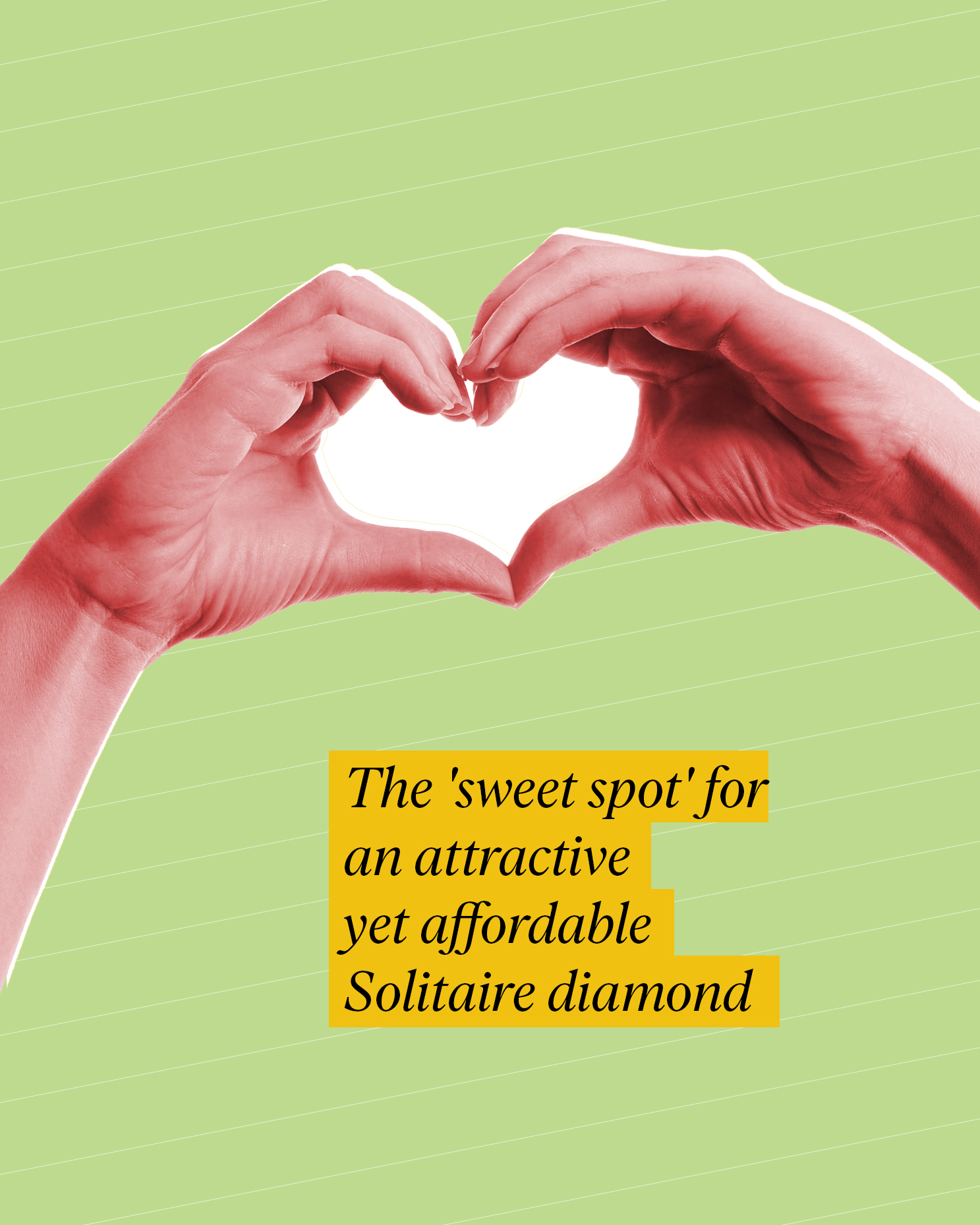
Verghese Alukkas: When seeking a budget-friendly option, focus on clarity and colour rather than size and cut. Solitaires between 0.30 to 0.75 carats are the best-selling points. The goal should be achieving that stunning solitaire sparkle.
For modern consumers, contemporary designs are essential. Trust, quality, and fundamental expectations from reputable brands are paramount. Ultimately, the pride and exclusivity associated with owning a solitaire from a particular brand often seal the deal.
10. What is the best setting for a Solitaire diamond to make it look bigger and sparkle more?
Varghese Alukkas, Managing Director Jos Alukkas: In setting, nowadays most makers are using plate setting (or illusion setting) to give it a bigger look. But in designs above .50 pointers, customers prefer prong setting. We suggest 6/8 prongs instead of 4 prongs for better safety of the stone. It would also be wise to make a choice based on the user’s lifestyle and routine. If a person plans to wear it daily and has an extremely active lifestyle, it is always better to go for a safer and sturdy-setting so that the Solitaire stays stable.
A solitaire is not just a purchase, but a considered choice—one that carries emotional depth and enduring value. To find the diamond that feels truly yours, you must understand the nuances that shape rarity, quality, and meaning. With knowledge as your guide, every solitaire becomes the right natural diamond for the story you wish it to tell.
